Let me start off by saying I am a novice, I want to build my own set of speakers one day, but before I do that I want to learn, so this was all part of that process.
This basically began by accident, I was helping a friend sort out (strip and clean, and clean, and check, and re-check components) an inheritance of some very nice audio gear from his recluse audiophile uncle who sadly passed away. Aside from a set of Martin Logan Sequel 2's powered by Steinhart (DVP-2XR pre and AM TVP777 van den hul mono's) there was a set of his bedroom speakers in the corner. The bedroom speakers were clearly DIY jobs, not well made, but knowing his uncle I guessed there would be value in them. My friend gave them to me, he didn't have space and said they were the bad speakers anyway.
These are the ML's and yes, that's his extra Tannoys serving his cottage.
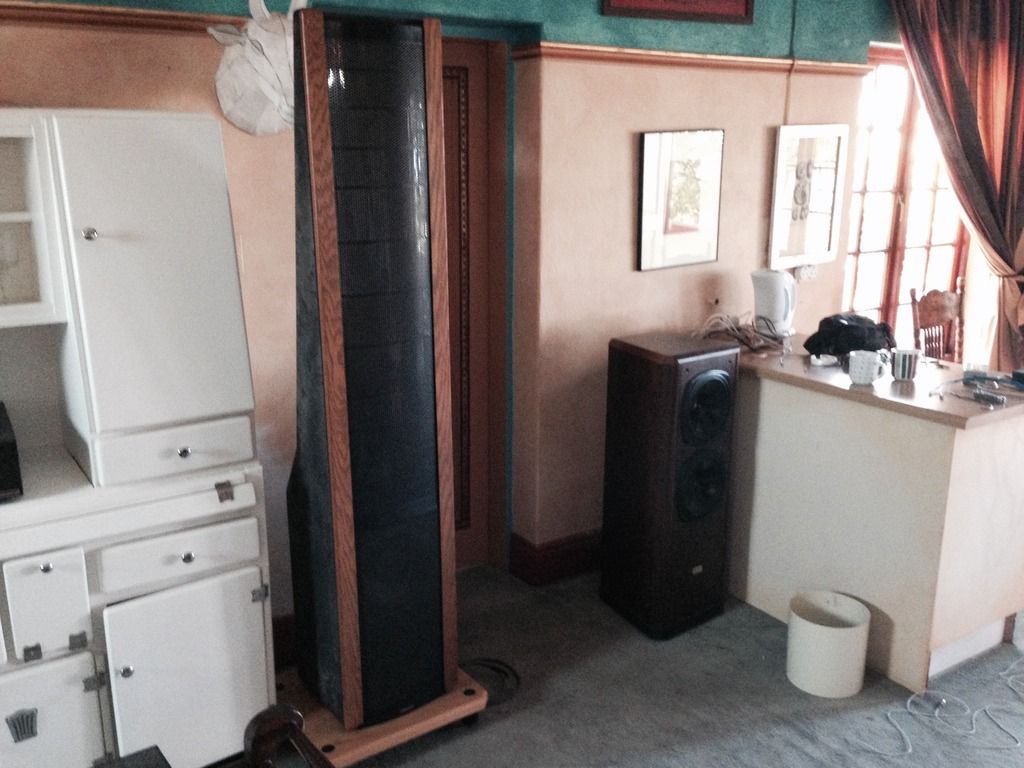
I began the process of restoring them and pretty soon discovered the bass drivers had some serious foam rot
going down. When I opened the speakers up, low and behold SEAS. T25 (h456) tweeter and 21f-we woofer. The next part was an even stranger discovery, the crossovers were actually Steinhart crossovers, designed for DCR speakers. To this day I cannot find anything about Steinhart designing crossovers, so if you are reading this and know anything, a history lesson might be nice.
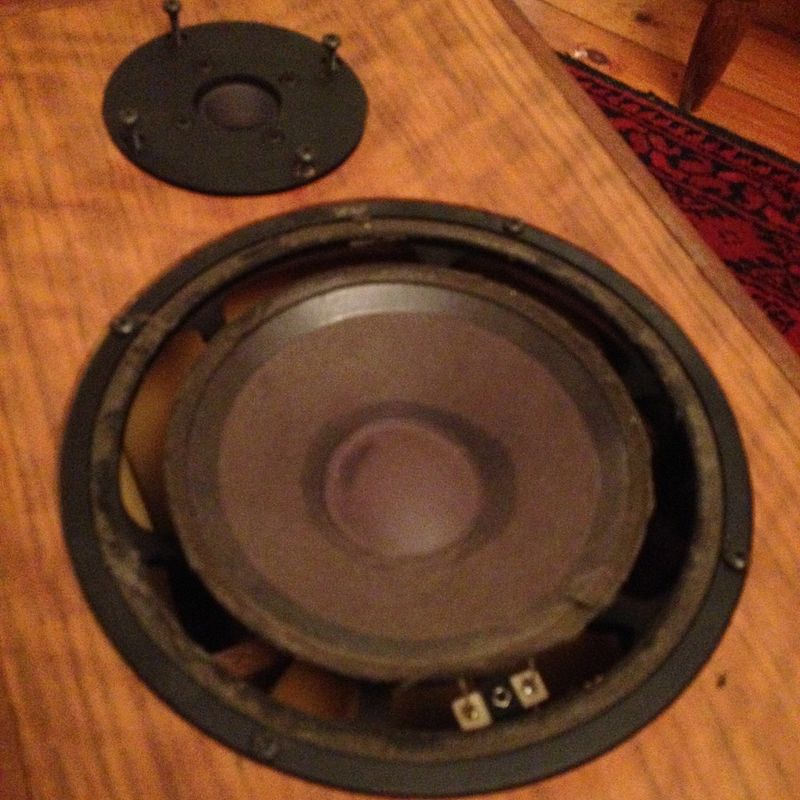
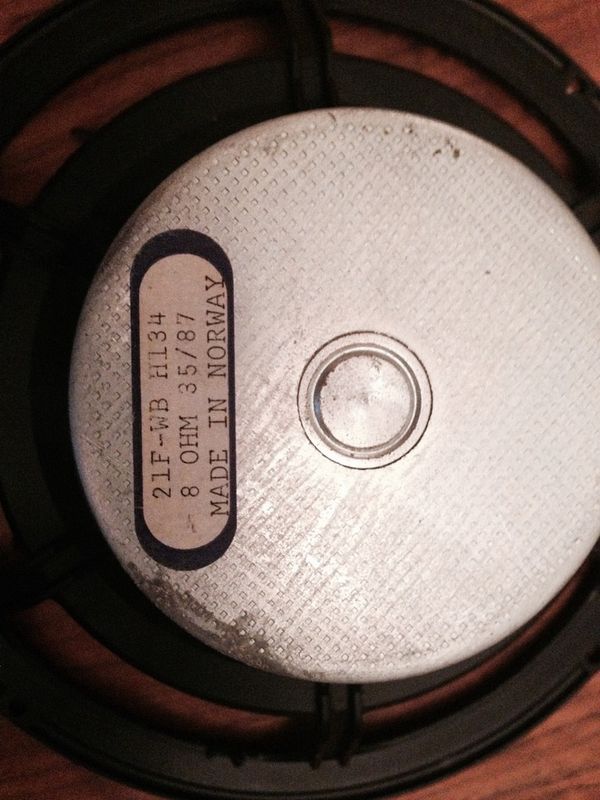
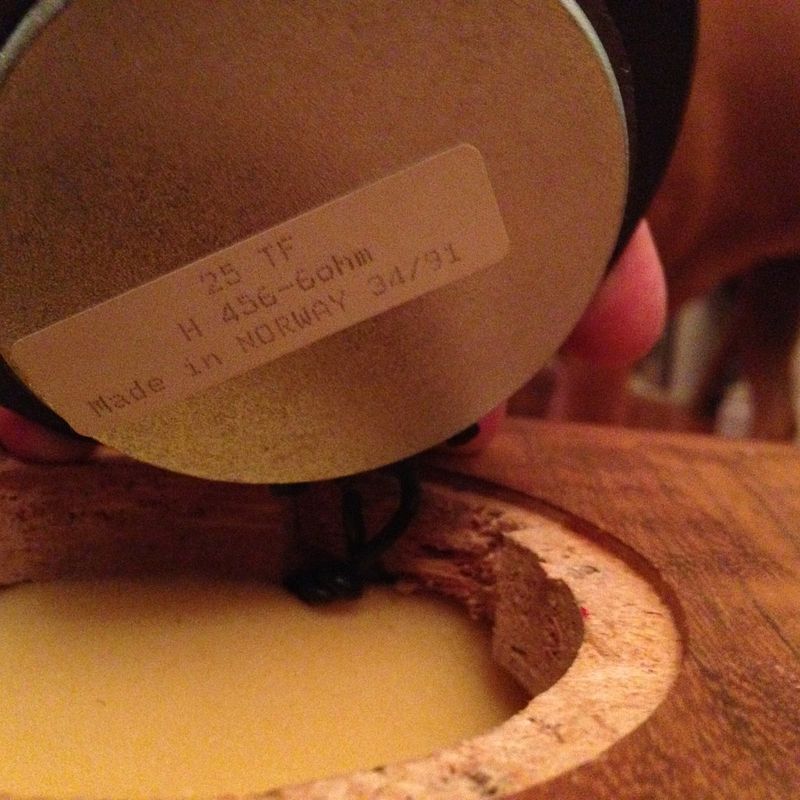
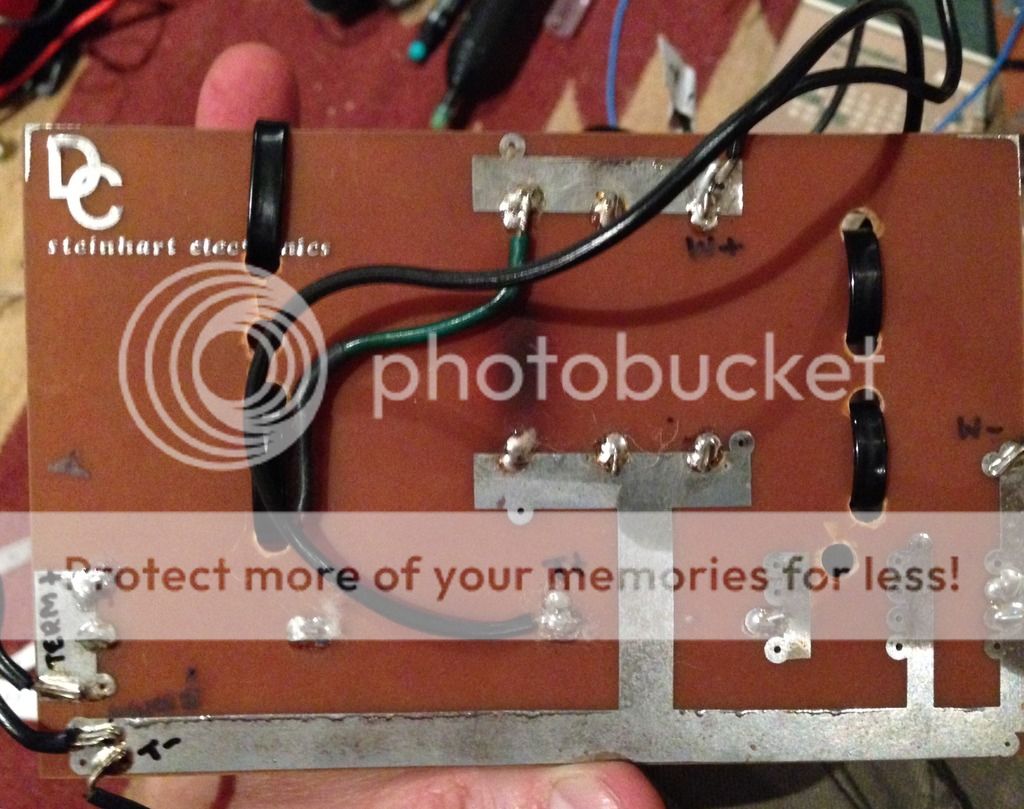
The boxes they were in were pretty badly constructed large bookshelves. Thin chipboard, not equally measured out, and not very well damped. I ran some numbers in winisd and a couple of other handy calculators for confirmation and basically the boxes were totally inappropriate for the setup. Nonetheless, I decided to restore them and see what I had. I re-sanded, re-sealed, refinished cabs, redid wiring, replaced some caps,and then I let the run for a few weeks. They were pretty good, the sound was great, but and audiophilia nervosa had gotten it's grip on me again.
So I began the process of researching and designing the ultimate DCR cabs based on the speakers and crossover. Claudio Negro, David Weems basically cover most of the information you need to know, I also found a great multi chamber calculator.
I began the design in illustrator and cinema 4d. I knew these suckers needed volume (around 90l) but they actually would be my bedroom speakers, so WAF factor was high on the list of requirements. 92 x 32 x 46, those were the final dimensions I could sneak into the house without risk of having all my gear banned from the bedroom.
Then I began the build process, life has been pretty hectic, so it took me ages. All the time I knew that if the cabs didn't work out I would have two smallish coffins, I could rotary saw myself into as a kind of DIY harakiri.
I made one error with the cabs, I should have doubled the MDF from the outset, at the size of these, I spent a long time doing additional bracing. I followed Troels Gravesen's recipe for damping, he has pictures and a full page on it, which is always useful for a beginner.
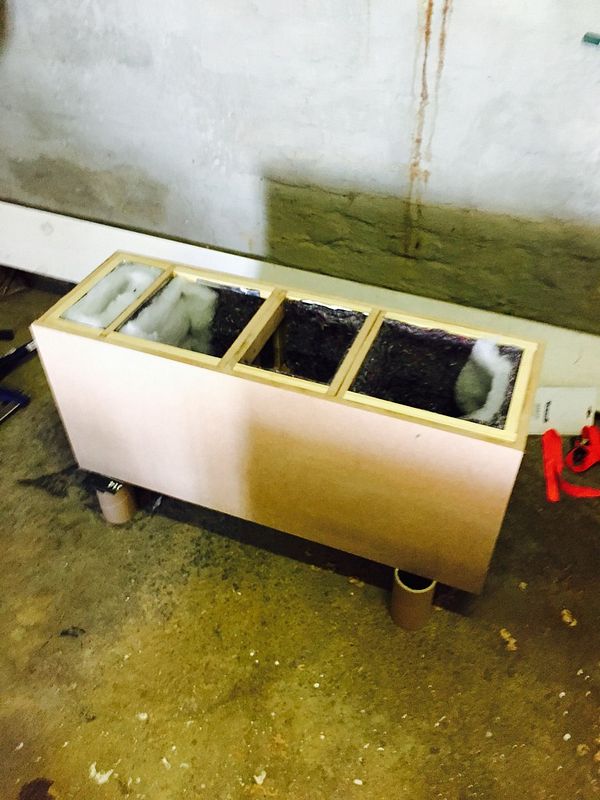
The front panel was a bit of an obsession. I cut the side angles with a rotary saw, surprisingly totally accurately, I couldn't find a contact with a table saw, and the one I did have would mean that I would need to spend a day helping him clean out a shed.
At this point, I realized I had made a slight error with the diameter of the vents I wanted to use, I had based them on generic plastic piping, but at some point between box notes and winisd I had changed the diameter slightly. All I can say is thank f for Plastic World, as expensive as Perspex is, the have all the tricky diameters. Talk about an unplanned investment, the piping ended up being the most expensive part for the project (okay, aside from the caps I imported). Truth is though, you tend to learn more from mistakes when they require a credit card to fix them.
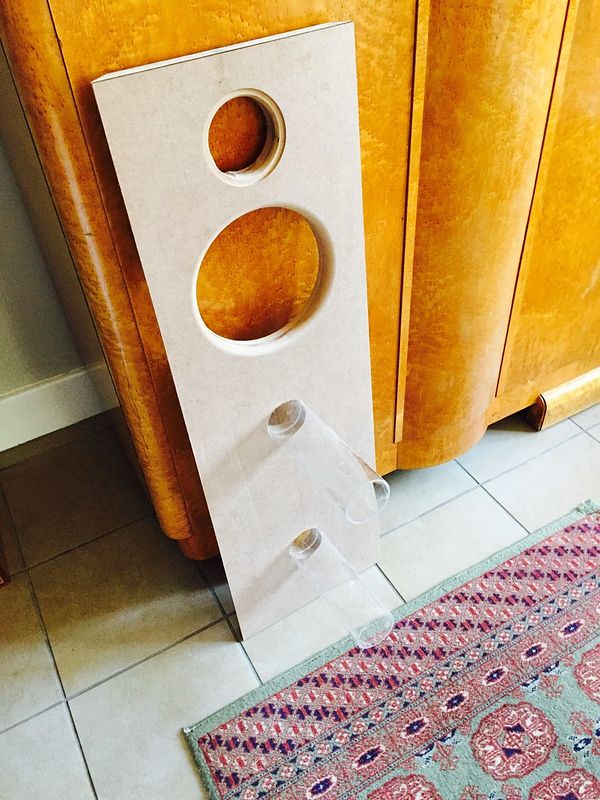
Perspex fitted perfectly and looked pretty as well, pity they, like my sculptural super structure of bracing would never be seen by anyone. Ever.
Test day, I wired up the suckers, used clamps to hold the front panels, thin foam to ensure no air gaps. Perhaps not the most accurate test on the planet, don't think B&W will be looking into my cottage as a testing laboratory anytime soon. Ran some tests with Fuzzmeasure Pro (yes, I am a Mac user) and a borrowed mic. I also tested with my own DIY mic, a WM61a mic as described by Linkwitz. There's a whole page on it, but basically I had built the mic and pre for another project. Anyway, it was surprisingly accurate.
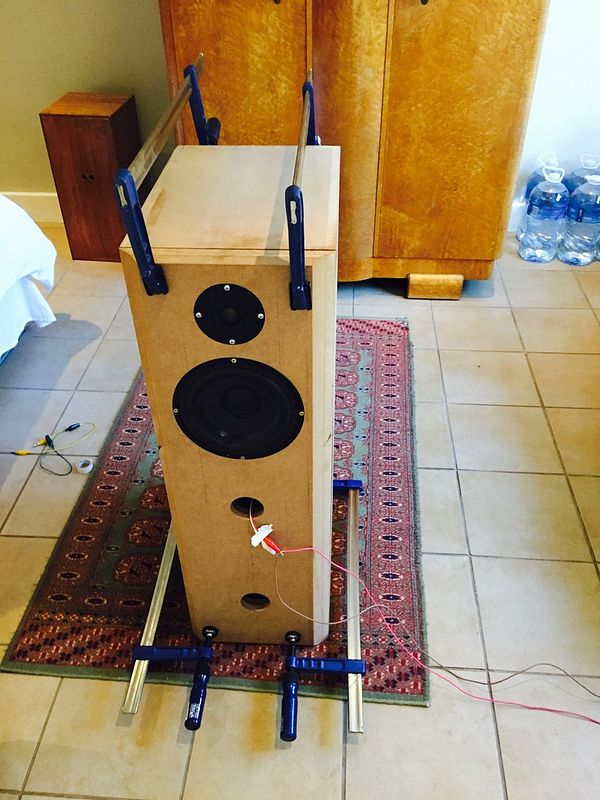
The test was pretty astounding, the real test result was actually the fact that I kept on getting distracted and stopping to just listen to the music. Eventually I called my wife and kids, whose hearing I actually trust. Unfortunately pheasant hunting with a 12 bore as a kid has probably damaged my hearing, but I'm in denial. Got an all round, albeit bored by test track 8, thumbs up.
I only discovered post the project that I should have considered veneer very early on. I used a special treatment I really enjoy for the finish, I can always strip them down and get the sprayed, but the finish I had chosen actually worked out nicely for the spot they are in
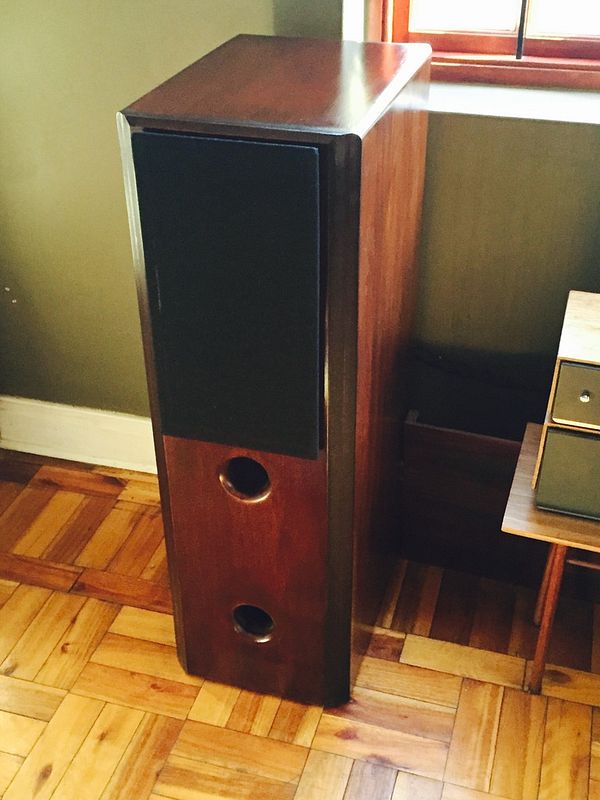
So, the final finish and setup, I rewired the crossovers again, recapped them with some decent caps.
Obviously, by the pictures you can see how my clever strategy to make them inconspicuous for WAF reasons worked out. Not. These are huge, but they blend nicely.
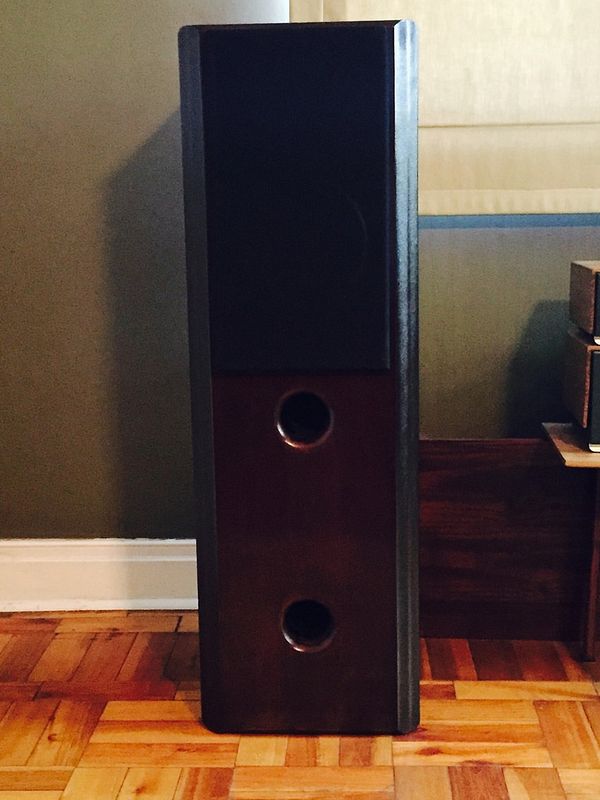
Okay, how do they sound? Dual chamber is everything it's cracked up to be as far as I am concerned. The base is crystal clear, these speakers do not need a sub. I actually think it's the boost to the mid base on these that give them such amazing clarity. As for the rest, sound stage, depth, clarity, for me it's basically a check on every front. Obviously I have a severe case of confirmation bias, because I invested so much time in them, but I am enjoying them immensely.
This basically began by accident, I was helping a friend sort out (strip and clean, and clean, and check, and re-check components) an inheritance of some very nice audio gear from his recluse audiophile uncle who sadly passed away. Aside from a set of Martin Logan Sequel 2's powered by Steinhart (DVP-2XR pre and AM TVP777 van den hul mono's) there was a set of his bedroom speakers in the corner. The bedroom speakers were clearly DIY jobs, not well made, but knowing his uncle I guessed there would be value in them. My friend gave them to me, he didn't have space and said they were the bad speakers anyway.
These are the ML's and yes, that's his extra Tannoys serving his cottage.

I began the process of restoring them and pretty soon discovered the bass drivers had some serious foam rot
going down. When I opened the speakers up, low and behold SEAS. T25 (h456) tweeter and 21f-we woofer. The next part was an even stranger discovery, the crossovers were actually Steinhart crossovers, designed for DCR speakers. To this day I cannot find anything about Steinhart designing crossovers, so if you are reading this and know anything, a history lesson might be nice.




The boxes they were in were pretty badly constructed large bookshelves. Thin chipboard, not equally measured out, and not very well damped. I ran some numbers in winisd and a couple of other handy calculators for confirmation and basically the boxes were totally inappropriate for the setup. Nonetheless, I decided to restore them and see what I had. I re-sanded, re-sealed, refinished cabs, redid wiring, replaced some caps,and then I let the run for a few weeks. They were pretty good, the sound was great, but and audiophilia nervosa had gotten it's grip on me again.
So I began the process of researching and designing the ultimate DCR cabs based on the speakers and crossover. Claudio Negro, David Weems basically cover most of the information you need to know, I also found a great multi chamber calculator.
I began the design in illustrator and cinema 4d. I knew these suckers needed volume (around 90l) but they actually would be my bedroom speakers, so WAF factor was high on the list of requirements. 92 x 32 x 46, those were the final dimensions I could sneak into the house without risk of having all my gear banned from the bedroom.
Then I began the build process, life has been pretty hectic, so it took me ages. All the time I knew that if the cabs didn't work out I would have two smallish coffins, I could rotary saw myself into as a kind of DIY harakiri.
I made one error with the cabs, I should have doubled the MDF from the outset, at the size of these, I spent a long time doing additional bracing. I followed Troels Gravesen's recipe for damping, he has pictures and a full page on it, which is always useful for a beginner.

The front panel was a bit of an obsession. I cut the side angles with a rotary saw, surprisingly totally accurately, I couldn't find a contact with a table saw, and the one I did have would mean that I would need to spend a day helping him clean out a shed.
At this point, I realized I had made a slight error with the diameter of the vents I wanted to use, I had based them on generic plastic piping, but at some point between box notes and winisd I had changed the diameter slightly. All I can say is thank f for Plastic World, as expensive as Perspex is, the have all the tricky diameters. Talk about an unplanned investment, the piping ended up being the most expensive part for the project (okay, aside from the caps I imported). Truth is though, you tend to learn more from mistakes when they require a credit card to fix them.

Perspex fitted perfectly and looked pretty as well, pity they, like my sculptural super structure of bracing would never be seen by anyone. Ever.
Test day, I wired up the suckers, used clamps to hold the front panels, thin foam to ensure no air gaps. Perhaps not the most accurate test on the planet, don't think B&W will be looking into my cottage as a testing laboratory anytime soon. Ran some tests with Fuzzmeasure Pro (yes, I am a Mac user) and a borrowed mic. I also tested with my own DIY mic, a WM61a mic as described by Linkwitz. There's a whole page on it, but basically I had built the mic and pre for another project. Anyway, it was surprisingly accurate.

The test was pretty astounding, the real test result was actually the fact that I kept on getting distracted and stopping to just listen to the music. Eventually I called my wife and kids, whose hearing I actually trust. Unfortunately pheasant hunting with a 12 bore as a kid has probably damaged my hearing, but I'm in denial. Got an all round, albeit bored by test track 8, thumbs up.
I only discovered post the project that I should have considered veneer very early on. I used a special treatment I really enjoy for the finish, I can always strip them down and get the sprayed, but the finish I had chosen actually worked out nicely for the spot they are in

So, the final finish and setup, I rewired the crossovers again, recapped them with some decent caps.
Obviously, by the pictures you can see how my clever strategy to make them inconspicuous for WAF reasons worked out. Not. These are huge, but they blend nicely.

Okay, how do they sound? Dual chamber is everything it's cracked up to be as far as I am concerned. The base is crystal clear, these speakers do not need a sub. I actually think it's the boost to the mid base on these that give them such amazing clarity. As for the rest, sound stage, depth, clarity, for me it's basically a check on every front. Obviously I have a severe case of confirmation bias, because I invested so much time in them, but I am enjoying them immensely.
